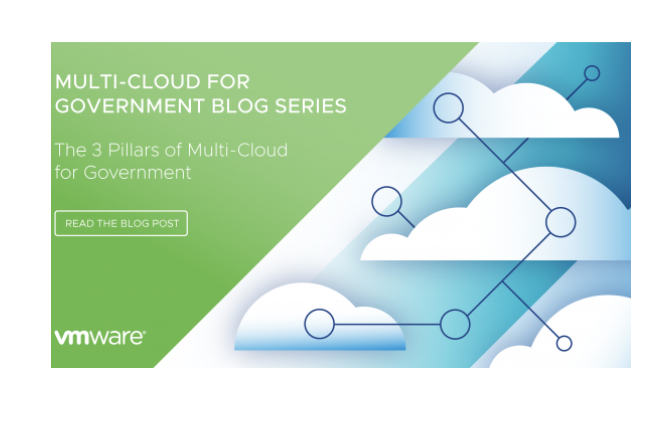Originally posted on http://www.vmware.com by Keith Nakasone

As we continue along in our multi-cloud blog series (you can find the first post here and the second post here), we need to consider the three core pillars of what makes a functional multi-cloud infrastructure:
- Data governance
- Interoperability
- Security
Let’s dive deeper into each.
- Data Governance
Many agencies need to consider a data governance framework that encompasses an enterprise-wide view. This must include the people, processes, and technology that enables and maintains a total lifecycle management oversight solution over mission business operations. In a promising trend, federal agencies continue to fill Chief Data Officer (CDO) roles within each agency to drive this effort. A cloud strategy and implementation plan that incorporates data strategy will improve the overall outcomes of a cloud solution.
- Interoperability
Data is also associated with interoperability capabilities. As organizations consider the adoption of multi- and hybrid-cloud solutions, leveraging an enterprise management solution will be key in the success of managing workloads among clouds.
Agency collaboration with cloud service providers is of the utmost importance for future engagements that require multiple levels of government and industry partners. Consider the response to emergencies, natural disasters, acts of terrorism, protection of critical infrastructure, and beyond. Having collaboration via tools and workability to continue without disruption can mitigate further disaster. An interoperability solution that is cloud agnostic will greatly improve the success of the cloud journey experience.
- Security
As we consider data and interoperability in cloud solutions, the most important aspect is protecting and securing data from end to end — also known as from the “core to edge” within the cloud infrastructure. An enterprise-wide security framework and solution that addresses all levels, vertically and horizontally, across multiple and hybrid cloud solutions, will help to reduce vulnerabilities and risks.
The holistic security framework is not a “one and done” build — it should be a continuous improvement model as technology and innovations advance over time. New vulnerabilities are spotted every day, and it’s because of a continuous improvement model that cloud infrastructures can remain protected.
Get started
At VMware, we continue to focus on delivering enterprise cloud solutions with security in mind, while keeping data and interoperability close to the mission. See the most recent example – the announcement that VMware Cloud on AWS GovCloud is now FedRAMP High compliant. Follow along for the next blog post in the series, which will address emerging technologies in the cloud.








